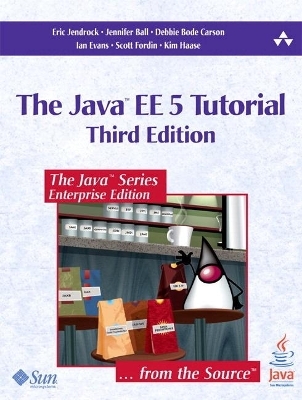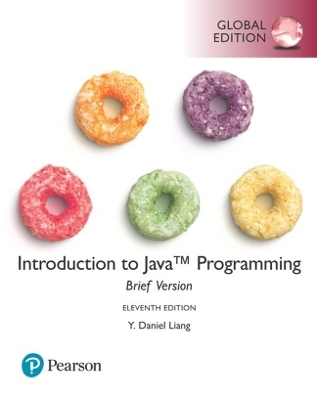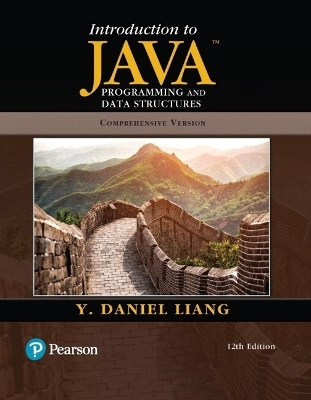
Java™ EE 5 Tutorial, The
Prentice Hall
978-0-321-49029-2 (ISBN)
- Titel erscheint in neuer Auflage
- Artikel merken
The Java EE 5 Tutorial is an introduction to programming server-side Java applications. This book takes a task-oriented, example-driven approach to show the reader how to build applications for the Java EE 5 platform. This book also describes the features and functionalities available with NetBeans 5.5 What's new in this edition? The author team have updated the existing chapters to reflect the changes to JSP, EJB, Servlets, and more. Also, the authors have added new chapters on the Sun Java System Application Server 9 as a deployment environment for server-side technologies. The web-tier technology chapters cover the components used in developing the presentation layer of a Java EE 5 or stand-alone web application. The web services technology chapters cover the APIs used in developing standard web services. The Enterprise JavaBeans (EJB) technology chapters cover the components used in developing the business logic of a Java EE 5 application. The Persistence technology chapters cover the Java Persistence API, which is used for accessing databases from Java EE applications. The platform services chapters cover the system services used by all the Java EE 5 component technologies
Eric Jendrock leads Sun's Java EE Tutorial and Java WSIT Tutorial teams. Jennifer Ball has documented JavaServer Faces technology, the Java2D API, deploytool, and JAXB. Debbie Carson documents the Java EE, Java SE, and Java WSIT platforms. Ian Evans documents the Java EE and Java Web Services platforms, and edits Java EE platform specifications. Scott Fordin has written numerous articles and Sun guidebooks on Java, XML, and web service technologies. Kim Haase documents the Java EE platform and Java Web Services, including Java Message Service (JMS), Java API for XML Registries (JAXR), and the SAAJ.
About This Tutorial xxxi Who Should Use This Tutorial xxxi
Prerequisites; xxxi
How to Read This Tutorial xxxi
About the Examples xxxiv
Further Information xxxviii
Typographical Conventions xxxix
Acknowledgments xxxix
Feedback xli
Chapter 1: Overview 1 Java EE Application Model 2
Distributed Multitiered Applications 3
Java EE Containers 8
Web Services Support 11
Java EE Application Assembly and Deployment 13
Packaging Applications 13
Development Roles 15
Java EE 5 APIs 18
Sun Java System Application Server Platform Edition 9 26
Part One: The Web Tier 31 Chapter 2: Getting Started with Web Applications 33 Web Application Life Cycle 36
Web Modules 38
Configuring Web Applications 46
Duke's Bookstore Examples 55
Accessing Databases from Web Applications 55
Further Information 57
Chapter 3: Java Servlet Technology 59 What Is a Servlet? 59
The Example Servlets 60
Servlet Life Cycle 63
Sharing Information 66
Initializing a Servlet 70
Writing Service Methods 71
Filtering Requests and Responses 77
Invoking Other Web Resources 84
Accessing the Web Context 88
Maintaining Client State 89
Finalizing a Servlet 92
Further Information 95
Chapter 4: JavaServer Pages Technology 97 What Is a JSP Page? 97
The Example JSP Pages 101
The Life Cycle of a JSP Page 107
Creating Static Content 110
Creating Dynamic Content 111
Unified Expression Language 113
JavaBeans Components 136
Using Custom Tags 141
Reusing Content in JSP Pages 145
Transferring Control to Another Web Component 146
Including an Applet 147
Setting Properties for Groups of JSP Pages 149
Further Information 154
Chapter 5: JavaServer Pages Documents 155 The Example JSP Document 156
Creating a JSP Document 158
Identifying the JSP Document to the Container 173
Chapter 6: JavaServer Pages Standard Tag Library 175 The Example JSP Pages 176
Using JSTL 177
Core Tag Library 180
XML Tag Library 188
Internationalization Tag Library 192
SQL Tag Library 195
Functions 199
Further Information 201
Chapter 7: Custom Tags in JSP Pages 203 What Is a Custom Tag? 204
The Example JSP Pages 204
Types of Tags 207
Encapsulating Reusable Content Using Tag Files 212
Tag Library Descriptors 229
Programming Simple Tag Handlers 240
Chapter 8: Scripting in JSP Pages 261 The Example JSP Pages 262
Using Scripting 263
Disabling Scripting 264
Declarations 264
Scriptlets 265
Expressions 266
Programming Tags That Accept Scripting Elements 267
Chapter 9: JavaServer Faces Technology 275 JavaServer Faces Technology Benefits 276
What Is a JavaServer Faces Application? 277
A Simple JavaServer Faces Application 278
User Interface Component Model 291
Navigation Model 302
Backing Beans 304
The Life Cycle of a JavaServer Faces Page 309
Further Information 315
Chapter 10: Using JavaServer Faces Technology in JSP Pages 317 The Example JavaServer Faces Application 318
Setting Up a Page 321
Using the Core Tags 324
Adding UI Components to a Page Using the HTML Component Tags 326
Using Localized Data 355
Using the Standard Converters 359
Registering Listeners on Components 366
Using the Standard Validators 369
Binding Component Values and Instances to External Data Sources 371
Binding Converters, Listeners, and Validators to Backing Bean Properties 378
Referencing a Backing Bean Method 379
Using Custom Objects 383
Chapter 11: Developing with JavaServer Faces Technology 389
Writing Bean Properties 390
Performing Localization 402
Creating a Custom Converter 405
Implementing an Event Listener 408
Creating a Custom Validator 411
Writing Backing Bean Methods 418
Chapter 12: Creating Custom UI Components 425
Determining Whether You Need a Custom Component or Renderer 426
Understanding the Image Map Example 429
Steps for Creating a Custom Component 436
Creating Custom Component Classes 437
Delegating Rendering to a Renderer 446
Handling Events for Custom Components 449
Creating the Component Tag Handler 450
Defining the Custom Component Tag in a Tag Library Descriptor 455
Chapter 13: Configuring JavaServer Faces Applications 457 Application Configuration Resource File 458
Configuring Beans 459
Registering Custom Error Messages 470
Registering Custom Localized Static Text 471
Registering a Custom Validator 472
Registering a Custom Converter 473
Configuring Navigation Rules 474
Registering a Custom Renderer with a Render Kit 478
Registering a Custom Component 480
Basic Requirements of a JavaServer Faces Application 481
Chapter 14: Internationalizing and Localizing Web Applications 493 Java Platform Localization Classes 493
Providing Localized Messages and Labels 494
Date and Number Formatting 498
Character Sets and Encodings 499
Further Information 503
Part Two: Web Services 505 Chapter 15: Building Web Services with JAX-WS 507 Setting the Port 508
Creating a Simple Web Service and Client with JAX-WS 508
Types Supported by JAX-WS 516
Web Services Interoperability and JAX-WS 516
Further Information 517
Chapter 16: Binding between XML Schema and Java Classes 519 JAXB Architecture 520
Representing XML Content 522
Binding XML Schemas 523
Customizing JAXB Bindings 526
Examples 533
Basic Examples 545
Customizing JAXB Bindings 549
Java-to-Schema Examples 575
Further Information 589
Chapter 17: Streaming API for XML 591 Why StAX? 591
StAX API 595
Using StAX 602
Sun's Streaming XML Parser Implementation 611
Example Code 612
Further Information 631
Chapter 18: SOAP with Attachments API for Java 633 Overview of SAAJ 634
Tutorial 639
Code Examples 667
Further Information 692
Chapter 19: Java API for XML Registries 693Overview of JAXR 693
Implementing a JAXR Client 696
Running the Client Examples 720
Using JAXR Clients in Java EE Applications 733
Further Information 739
Part Three: Enterprise Beans 741 Chapter 20: Enterprise Beans 743 What Is an Enterprise Bean? 743
What Is a Session Bean? 745
What Is a Message-Driven Bean? 747
Defining Client Access with Interfaces 749
The Contents of an Enterprise Bean 754
Naming Conventions for Enterprise Beans 755
The Life Cycles of Enterprise Beans 755
Further Information 758
Chapter 21: Getting Started with Enterprise Beans 759 Creating the Enterprise Bean 760
Creating the Application Client 763
Creating the Web Client 765
Deploying the Java EE Application 767
Running the Application Client 768
Running the Web Client 769
Modifying the Java EE Application 770
Chapter 22: Session Bean Examples 771 The cart Example 771
A Web Service Example: helloservice 780
Using the Timer Service 783
Handling Exceptions 789
Chapter 23: A Message-Driven Bean Example 791 Example Application Overview 791
The Application Client 792
The Message-Driven Bean Class 793
Packaging, Deploying, and Running the SimpleMessage Example 795
Creating Deployment Descriptors for Message-Driven Beans 798
Part Four: Persistence 801 Chapter 24: Introduction to the Java Persistence API 803 Entities 803
Managing Entities 816
Chapter 25: Persistence in the Web Tier 825 Accessing Databases from Web Applications 825
Chapter 26: Persistence in the EJB Tier 835 The order Application 835
The roster Application 853
Chapter 27: The Java Persistence Query Language 861 Terminology 862
Simplified Syntax 862
Example Queries 863
Full Syntax 870
Part Five: Services 897 Chapter 28: Introduction to Security in Java EE 899 Overview 900
Security Implementation Mechanisms 906
Securing Containers 910
Securing the Application Server 913
Working with Realms, Users, Groups, and Roles 914
Establishing a Secure Connection Using SSL 922
Further Information 934
Chapter 29: Securing Java EE Applications 937 Securing Enterprise Beans 938
Enterprise Bean Example Applications 963
Securing Application Clients 978
Securing EIS Applications 980
Example Applications in the Application Server 984
Further Information 984
Chapter 30: Securing Web Applications 987 Overview 988
Working with Security Roles 989
Checking Caller Identity Programmatically 994
Defining Security Requirements for Web Applications 998
Examples: Securing Web Applications 1018
Further Information 1049
Chapter 31: The Java Message Service API 1051 Overview 1051
Basic JMS API Concepts 1055
The JMS API Programming Model 1059
Writing Simple JMS Client Applications 1071
Creating Robust JMS Applications 1098
Using the JMS API in a Java EE Application 1119
Further Information 1127
Chapter 32: Java EE Examples Using the JMS API 1129 A Java EE Application That Uses the JMS API with a Session Bean 1130
A Java EE Application That Uses the JMS API with an Entity 1136
An Application Example That Consumes Messages from a Remote Server 1146
An Application Example That Deploys a Message-Driven Bean on Two Servers 1153
Chapter 33: Transactions 1165 What Is a Transaction? 1165
Container-Managed Transactions 1166
Bean-Managed Transactions 1173
Transaction Timeouts 1174
Updating Multiple Databases 1175
Transactions in Web Components 1177
Chapter 34: Resource Connections 1179 Resources and JNDI Naming 1179
DataSource Objects and Connection Pools 1181
Resource Injection 1182
The confirmer Example Application 1186
Further Information 1190
Chapter 35: Connector Architecture 1191 About Resource Adapters 1191
Resource Adapter Contracts 1193
Common Client Interface 1196
Further Information 1197
Part Six: Case Studies 1199 Chapter 36: The Coffee Break Application 1201 Common Code 1202
JAX-WS Coffee Supplier Service 1202
SAAJ Coffee Supplier Service 1204
Coffee Break Server 1219
Building, Packaging, Deploying, and Running the Application 1226
Chapter 37: The Duke's Bank Application 1233 Enterprise Beans 1234
Application Client 1240
Web Client 1243
Building, Packaging, Deploying, and Running the Application 1253
Appendix A: Java Encoding Schemes 1259 Further Information 1260
Appendix B: Preparation for Java EE Certification Exams 1261CX-310-081: Sun Certified Web Component Developer 1262
SL-351: Business Component Development with Enterprise JavaBeans™ Technology 1263
About the Authors 1265
Index 1267
| Erscheint lt. Verlag | 3.11.2006 |
|---|---|
| Reihe/Serie | The Java Series ... from the Source |
| Verlagsort | Upper Saddle River |
| Sprache | englisch |
| Maße | 236 x 234 mm |
| Gewicht | 2044 g |
| Themenwelt | Informatik ► Programmiersprachen / -werkzeuge ► Java |
| Mathematik / Informatik ► Informatik ► Web / Internet | |
| ISBN-10 | 0-321-49029-0 / 0321490290 |
| ISBN-13 | 978-0-321-49029-2 / 9780321490292 |
| Zustand | Neuware |
| Informationen gemäß Produktsicherheitsverordnung (GPSR) | |
| Haben Sie eine Frage zum Produkt? |
aus dem Bereich

